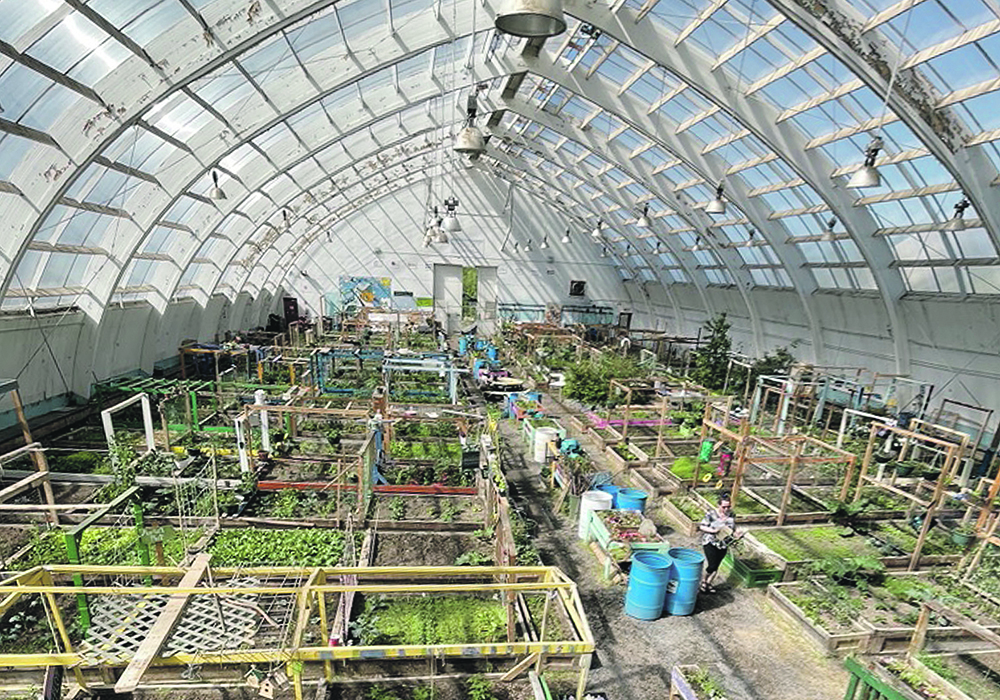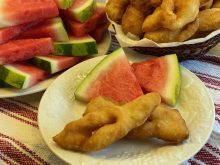After 25 gardening seasons, the Inuvik Community Greenhouse has created a community of avid gardeners who look forward to another season of growing their own food in the warm inviting atmosphere of the largest, most northern greenhouse in Canada.
It is situated 200 kilometres north of the Arctic Circle and 97 km south of the Arctic Ocean in the Northwest Territories community of Inuvik.
Growing healthy, fresh, lower cost food is not the greenhouse’s only goal. There is also a community of gardening friends willing to share their gardening knowledge, the warm, fragrant, peaceful atmosphere, a gathering space for arts, crafts and music and the fun of learning how to produce, pick, prepare and preserve food.
The Community Garden Society of Inuvik says on the greenhouse website at inuvikgreenhouse.square.site that “for the past 25 years, we have worked to foster community through gardening by creating a safe and enjoyable space filled with plants, programming and food for all to enjoy.”
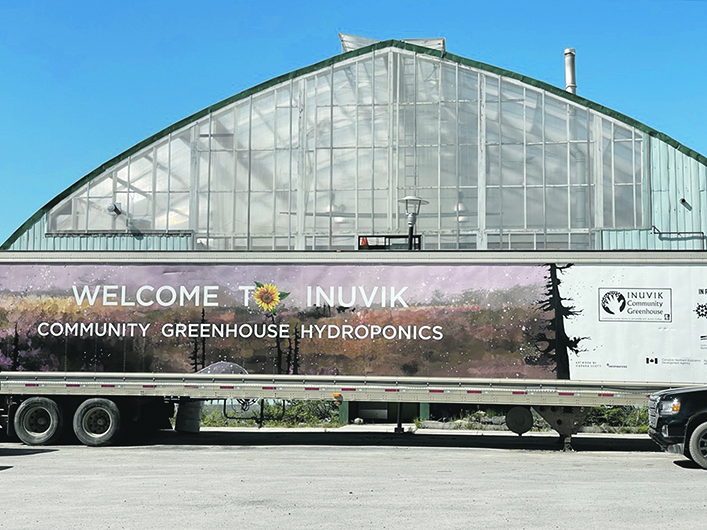
The main incentive for developing the greenhouse was initially to provide a local source of produce. It is difficult to deliver fresh produce, let alone economical produce, from the south because it must travel the Dempster Highway, a 736 km gravel road that runs through the Yukon and crosses the Mackenzie River, by ice road or ferry, before reaching Inuvik. There are also periods of several weeks during freeze-up in the fall and break-up in the spring when no fresh produce is available.
The greenhouse was created when an old wooden Quonset skating rink, destined to be torn down, was re-imagined into a community greenhouse.
In 1998, interested residents formed a not-for-profit called the Community Garden Society of Inuvik (CGSI). Their goal was to raise funds and transform the almost 30-year-old hockey arena into a community greenhouse.
The rink had been built in 1971 by one of the priests at the former Grollier Hall residence for children attending Sir Alexander Mackenzie School in Inuvik. The residence operated from Sept. 1, 1959, to June 1997, providing housing for schoolchildren aged five to 19 from communities within the Sahtu, Beaufort Delta and Kitikmeot regions.
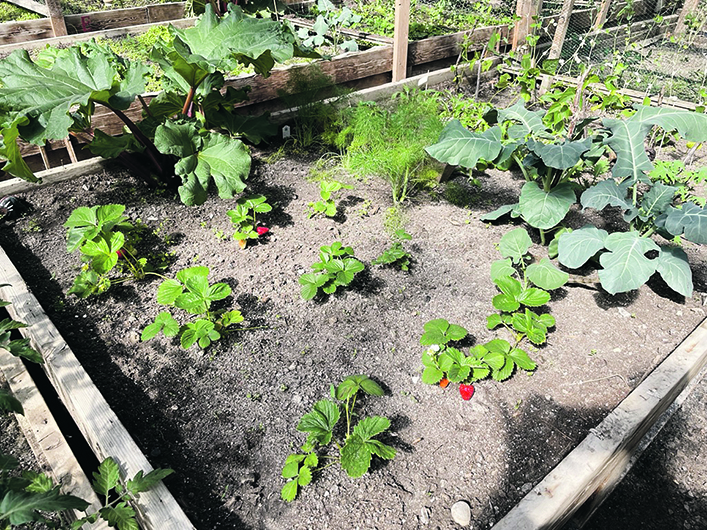
It has been acknowledged that emotional, physical and sexual abuse was inflicted upon these students. Plaques have been placed in the entrance of the greenhouse to acknowledge and commemorate the courage and resilience of former Grollier Hall residential school students. From this traumatic past, the greenhouse has become a place of healing and growth for the community.
Two key staff positions at the greenhouse this year — greenhouse manager Alissa Sallans and event activity co-ordinator Karli Zschogner — foster the gardening, community development and healing.
The events and workshops focus on three areas:
- Food security by conducting workshops and knowledge sharing on gardening, harvesting, seed saving, preserving, cooking and waste or cost reduction.
- Bring art and art activities into the greenhouse to encourage more people to come into and use the greenhouse space. In the promotional materials, art is defined as all mediums — crafting, drawing, painting, sewing, beading, music, language, audio, photography, videography, graphic design, writing and poetry.
- Fundraisers such as dances, games and food and beverage sales.
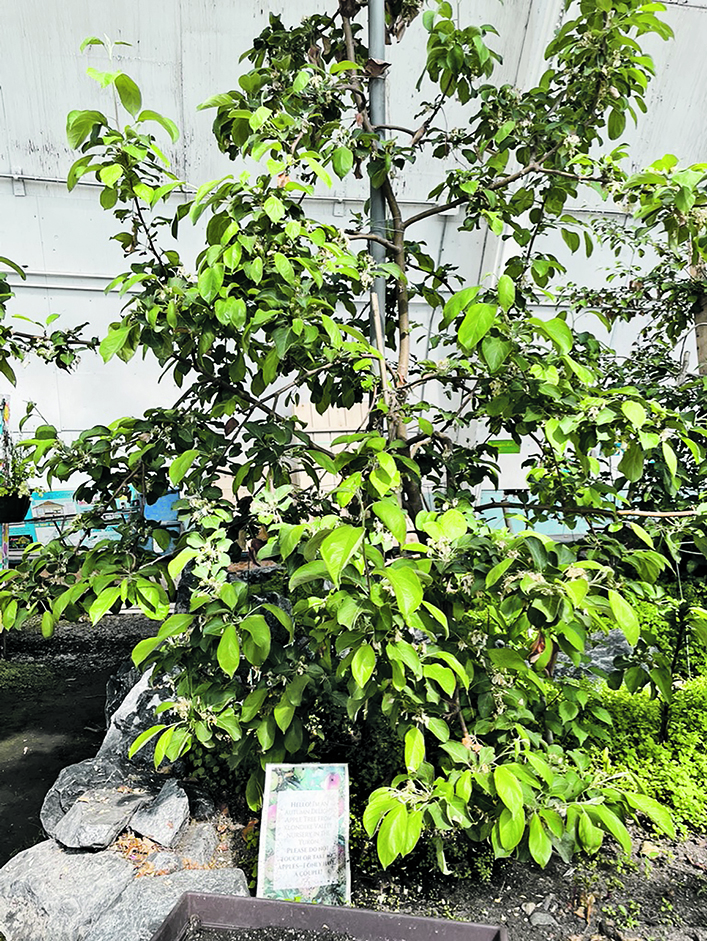
Zschogner is looking for facilitators to share their skills, stories and experience, and she wants to provide them with support and confidence-building opportunities.
To achieve some of these goals, ICG has partnered with the Great Northern Arts Festival Society to host open mic nights, programming and events in the greenhouse during the summer.
“The greenhouse is barely open and we have 120 members signed up,” Sallans said in an interview May 2.
“We expect that to grow.”
A $25 membership gives exclusive access to sales and events, 24/7 access to the greenhouse, perks, discounts and a newsletter. Members can rent a large five by eight foot plot for $60 plus five volunteer hours, and a small two by eight foot plot for $30 plus two volunteer hours. Membership covers one gardening season running from April 1 to March 31. Elders older than 60 can receive a large plot free of charge with the purchase of a membership.
There are 188 garden plots this year. The greenhouse uses 39 of the plots as market plots from which produce is sold at the weekly greenhouse market or at the weekly community Arctic Market. As the season progresses, they hope to use some of the produce to make soups, salads and other food items to sell.
The large arena area, where the garden plots are located, is naturally heated by the sun, which for 56 days from late June, July and part of August shines 24 hours a day.
There is also a smaller upper level that can be heated early in the season, when it is still dark for a few hours at night.
Sallans said on May 2 the upper-level area was “30 C, just warmed by the sun.” This area is used as a nursery for starting plants for use in the market plots or for sale.
This year the greenhouse’s pre-season began April 11 with a Starting Seeds Workshop that more than 20 people attended.
Faith Labelle of Inuvik shared that “she is super excited to come to the greenhouse after work to decompress and work on her plot. She also wants to can a lot of food for winter to help reduce food costs.”
The greenhouse also sells seeds and has informational videos with tips and tricks about seed selection and planting on their Facebook page at www.facebook.com/inuvikcommunitygreenhouse. A monthly calendar of activities and events, along with photos and comments from each event, are also posted to keep everyone informed.
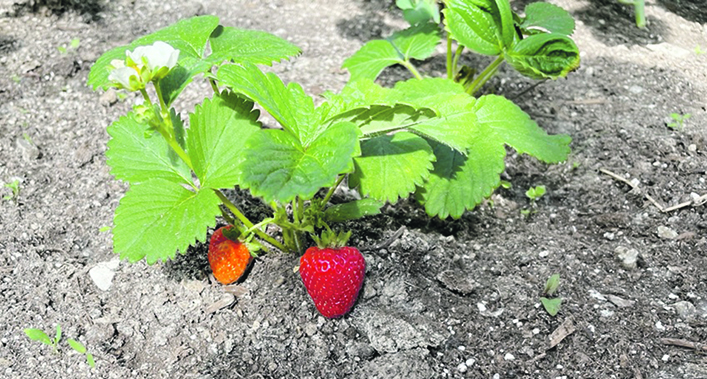
Some of the interesting and exciting activities planned for May include:
- Prep your plot and learn about soil, planting and watering.
- Learn two of the local languages, Inuvialuktun one evening and Gwich’in a different evening.
- Local Plant Paint Night to learn how to identify and paint local plants.
- Learn how to harvest birch sap and work with it.
- Harvest to table cooking with an Asian twist.
- Learn how to work with and crochet muskox qiviut wool. Arctic muskox spring-shed wool is considered the highest-quality fibre in the world, eight times warmer than sheep’s wool and softer than cashmere.
On April 22, more than 50 people came to the greenhouse to celebrate Earth Day by painting pots, planting seeds and transplanting some of the 1,000 strawberry plants.
Sallans said 20,000 plant plugs had arrived at the end of April from the Jolly Farmer nursery in New Brunswick.
“It is a four-day trip from the time they leave New Brunswick, traveling by vehicle and plane,” she said.
“The plants arrived all in great shape.”
Volunteers helped to transplant the plugs.
The plants will grow in the nursery until the greenhouse’s plant sale, which is held at the end of May and into June, offering greenhouse members, community members and gardeners in other northern communities the opportunity to purchase soil mix, veggies, herbs and flowers that have already been started.
Through the years the interest in gardening has increased in Inuvik and surrounding communities such as Fort MacPherson, which has a dedicated group of gardeners and a small community greenhouse.
“This spring some of the avid gardeners are wheel barrowing snow into the greenhouse to put on top of the plots to add moisture to the soil,” Sallans said.
“The local fire department is filling water tanks for watering the nursery plants, as the community water source in the greenhouse is still frozen.”
As the season progresses this year, there will be workshops on weeding, picking, using and preserving the produce. As produce is available it will be sold at the markets. Facebook posts announce when vegetables are available, such as last Aug. 5, when carrots were advertised for $5 per large bundle or an announcement of a special three day “abundant vegetable sale” that included tomatoes, carrots, beets, celery and other vegetables.
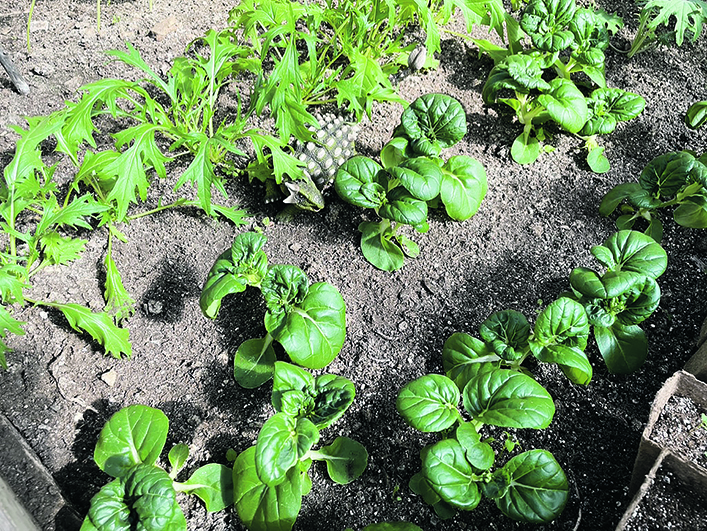
This was a “pay-what-you-can” sale with a suggested price of $5 per bundle or bag. All the produce from the greenhouse is pesticide and herbicide free.
The end of the season Harvest Festival celebration last year included a barbecue and apple dessert baking and eating.
“For the kids, one of the favourite events was “digging for treasure in the potato plots,” Sallans said.
“The kids were so excited to discover they could eat their treasure.”
To recognize the importance of volunteers, both members and non-members, they are encouraged to track their volunteer hours every time they help at the greenhouse using an online form. Each time they add hours, their name is put in for draws made during the summer for prizes. By the first of May, volunteers had already registered 150 hours.
Betty Ann Deobald is a home economist from Rosetown, Sask., and a member of Team Resources. Contact: team@producer.com.


